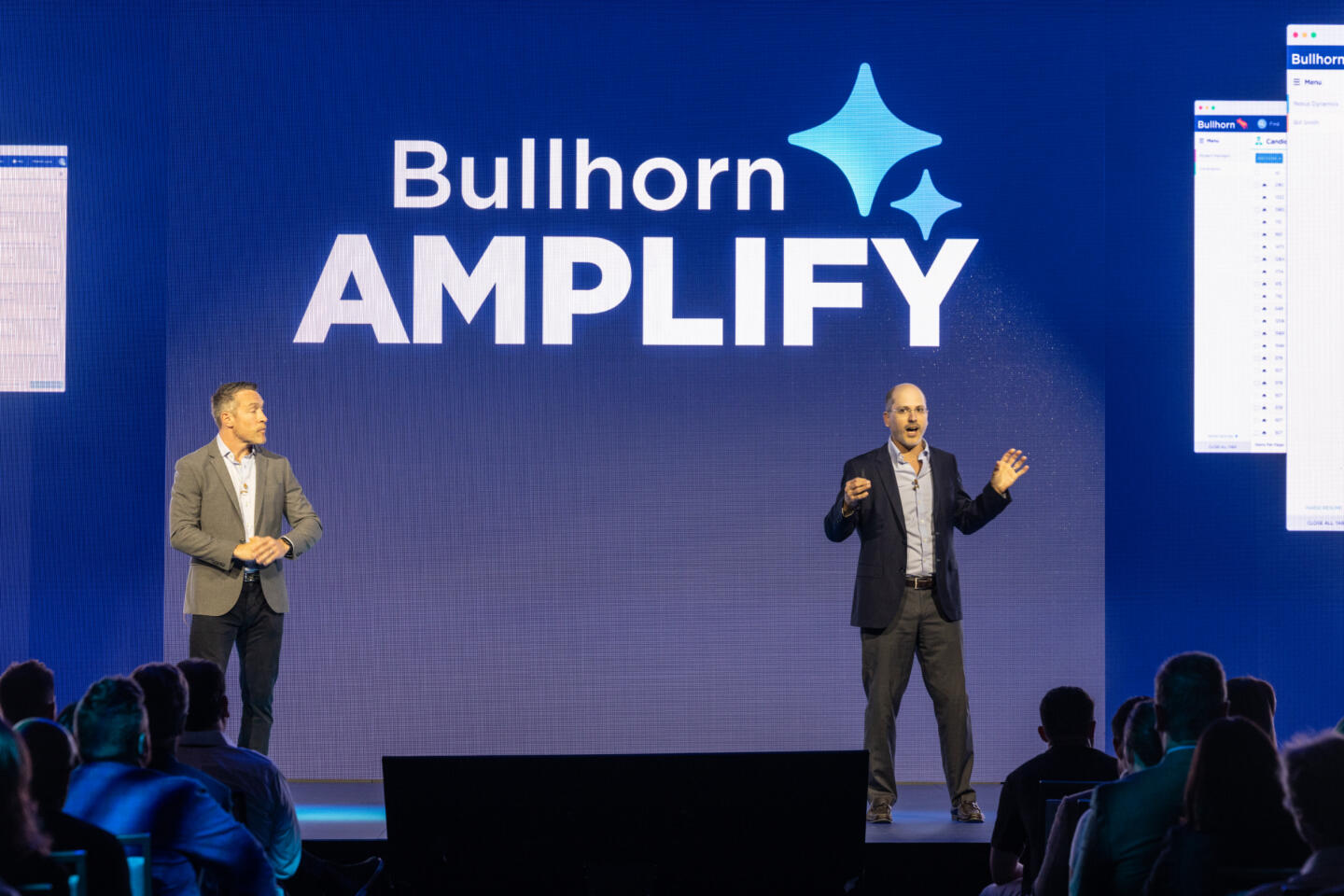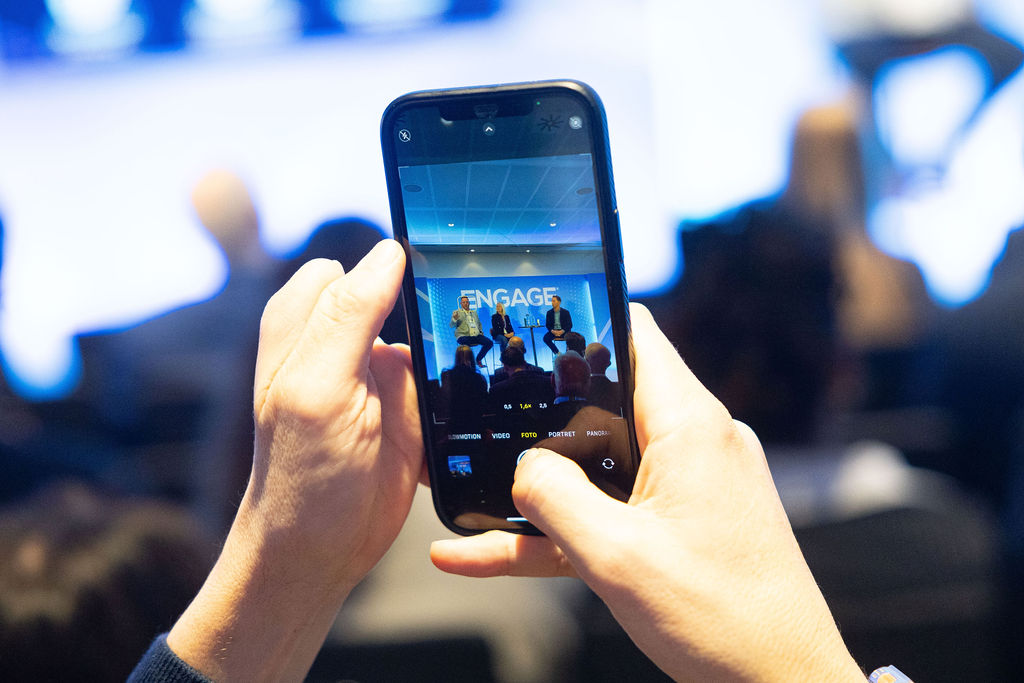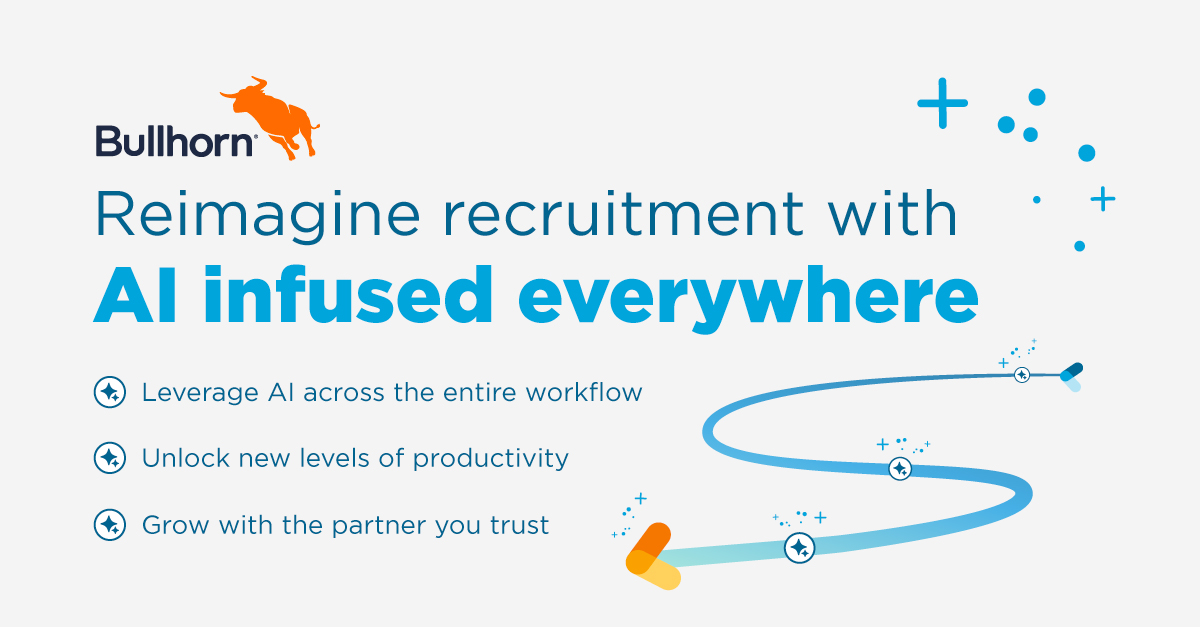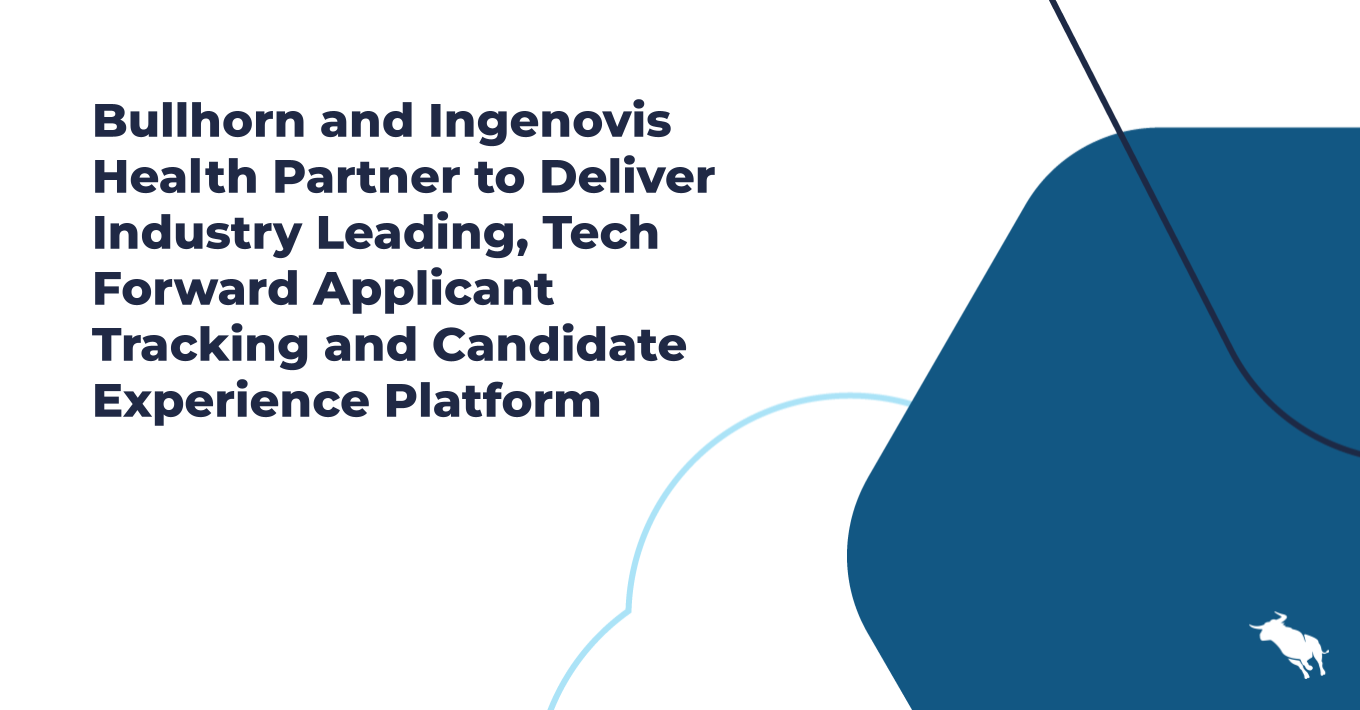A Vision for Better Business Relationships: Art Papas and Arianna Huffington at Engage 2016
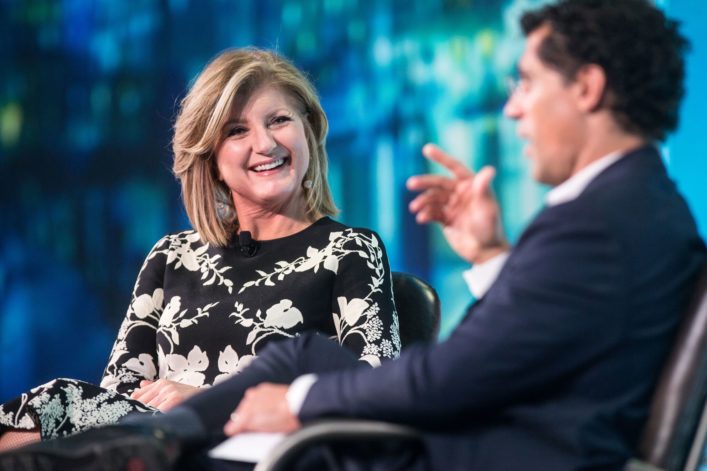
Bullhorn Engage 2016 is here! Earlier today, the 1,000 attendees gathered in Boston heard about Bullhorn’s vision from CEO Art Papas, got a peek inside new Bullhorn innovation, and learned business (and sleep!) lessons from Arianna Huffington. Whether you’re with us at Engage or you’re following along from home, here’s a recap of Thursday’s keynote messages.
Art Papas: The Bullhorn Vision
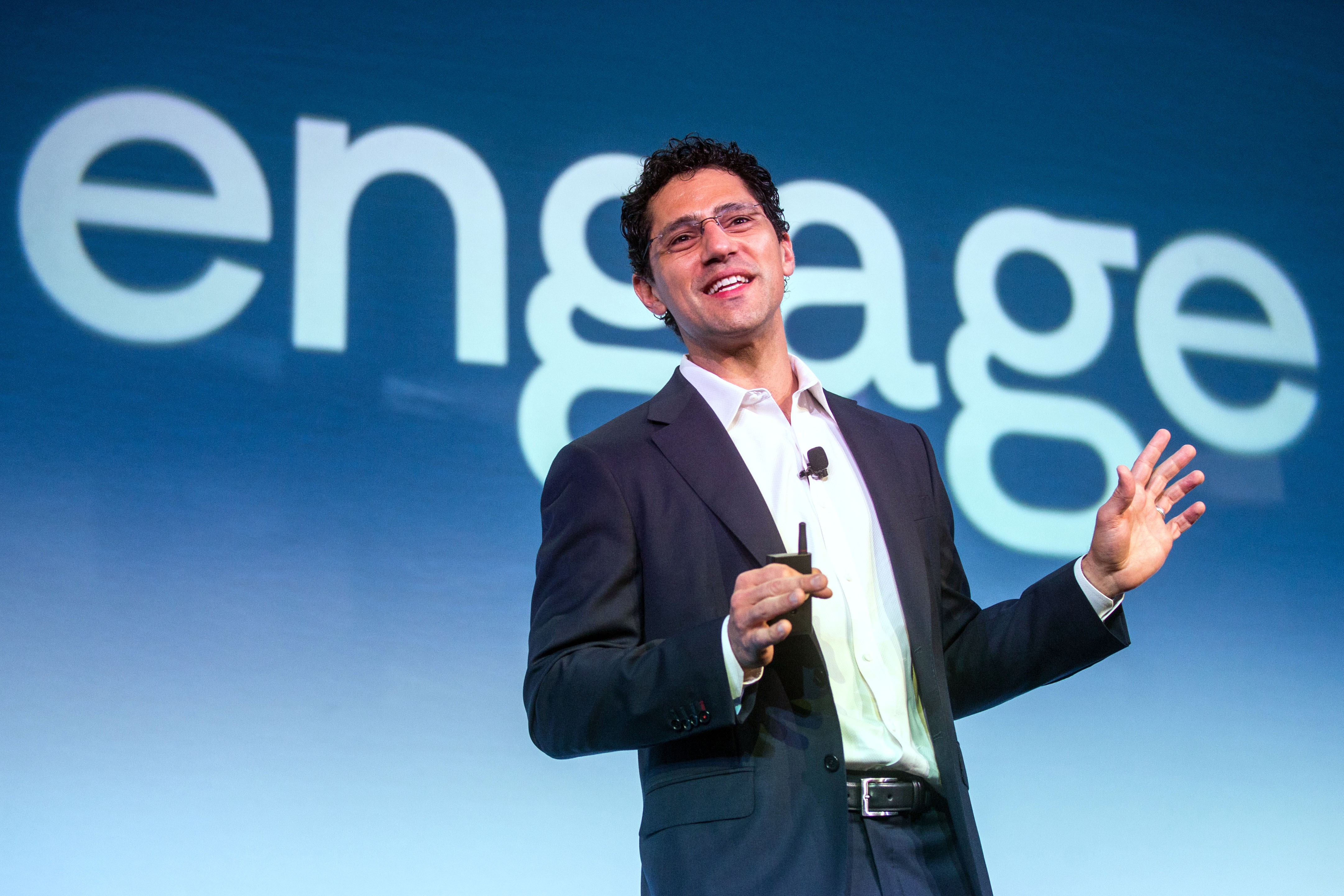
How do you engage the most important constituents in your work life: customers, leaders, and talent.
That was the question Art Papas asked to kick off Engage. He shared three themes that are shaping today’s business.
1. We’re living in an age of transparency.
We’re being held accountable (by customers and by employees) in ways we never were before. Social media and online review platforms have amplified word of mouth. Good news spreads fast, and bad news spreads faster. It’s not just consumers rating restaurants or hotels. B2B software buyers can visit software review sites and find out what it’s really like to be a Bullhorn customer. Prospective hires can read employee reviews on Glassdoor.
But leaders can’t control every single customer interaction. Somewhere, one of your employees might be doing something that’s disgruntling a customer. These days, you’re only as good as your worst customer interaction.
You can think of your customer experience like a train. The train looks good. It’s nice and shiny and clean. Everything’s working. Then, someone doesn’t return a customer’s message. Or one employee leaves a bad review on Glassdoor. So, a little spot of graffiti shows up on the train.
What happens next matters a lot. A little graffiti isn’t a big deal, but if you ignore it instead of quickly cleaning it up, the train quickly gets covered in graffiti.
What’s the solution? Technology alone isn’t the fix, but it can play a role to warn you about the graffiti you need to pay attention to.
#CustomerExperience like a graffitied train if service slips. Culture/tech can warn you. @artpapas #BullhornEngage pic.twitter.com/3BFQtWUFMm
— Bullhorn (@Bullhorn) June 9, 2016
2. Robots are here, but they’ll never take the place of relationship builders.
Think about an industry that was nonexistent in the 1960s: Staffing. Now, contingent staffing is a $120 billion business.
Another industry that was nonexistent just a decade or two ago: Robotics. Art has been interested in the rise of robots for several years. What’s crazy is how quickly robots are improving. They’re sophisticated, they can learn and they’re taking humans’ jobs. Robots are currently replacing accountants, telemarketers and factory workers. That’s a little scary, but there’s a silver lining: Robots won’t ever take the place of humans for relationship building. When people get bad medical news, or need help finding a new job, or need advice about improving their business, they want a human’s help.
Robots won't take place of relationship builders but they're taking everything else! #BullhornEngage pic.twitter.com/6srt2gxurR
— hilary hurst jarman (@hurststatus) June 9, 2016
In a nutshell: If you’re in sales, you have a future. If you adopt the adage that we’re all in sales, we all have a future.
3. Work needs purpose.
The conversation about work culture has gotten a little cacophonous. Core values, purpose, culture…is this just about millennials? Art says no. We’re all working all the time, thanks to our always-on smartphones with hundreds of red notifications. When you feel over-worked and exhausted, it’s natural to come to work, look around, and wonder what the mission really is. Maybe you hear talk about core values, but you don’t really see them in action.
Gallup research shows companies need a mission people want to get behind — beyond just making the boss rich. With tools like Glassdoor, they can find a company with the mission they want.
If you’re a nonprofit, it’s easy to clarify your mission and rally people around it. But how can B2B companies define a meaningful mission?
At Bullhorn, we came up with a mission that really resonated: Create an incredible customer experience.
People are working all the time. They'll find a mission that appeals to them. @artpapas #BullhornEngage pic.twitter.com/gNeZvP7Xvc
— Bullhorn (@Bullhorn) June 9, 2016
We created a huge sign for our new building lobby.
We also created new core values that are designed to reflect the behavior we want from employees. These values are based on what we’ve learned over the past decade about what customers like and what makes them want to come back and do business with us again. We got really specific about what to do — and what not to do. We score people on those core values every quarter.
Our incredible customer experience cycle helps employees see how the mission relates to them. If we live the mission, then we have raving fans, who grow the business by telling their friends, which means we have to hire more people, create management jobs for our top performers to move into, we can create better products and services and drive growth and momentum in a positive cycle.
Art drives home the core values that lead to incredible customer experiences by publicly recognizing Bullhorn employees who have done great work.
.@Bullhorn incredible experience cycle at #BullhornEngage. Love this virtuous circle. Sweeps up everyone. pic.twitter.com/JVHeMK2Abf
— Gordon Burnes (@gordonburnes) June 9, 2016
The results: The customer experience index went off the charts, sales went through the roof, Bullhorn’s NPS grew, and the employee experience went way up — Bullhorn used to have a 3.0 score on Glassdoor, and now has a 4.5.
“For me as a leader, I feel better about what I’m doing. I get my energy from this. It’s really rewarding. Culture isn’t just touchy-feely; it’s about actually running a better business,” Art says.
Turning Vision into Innovation
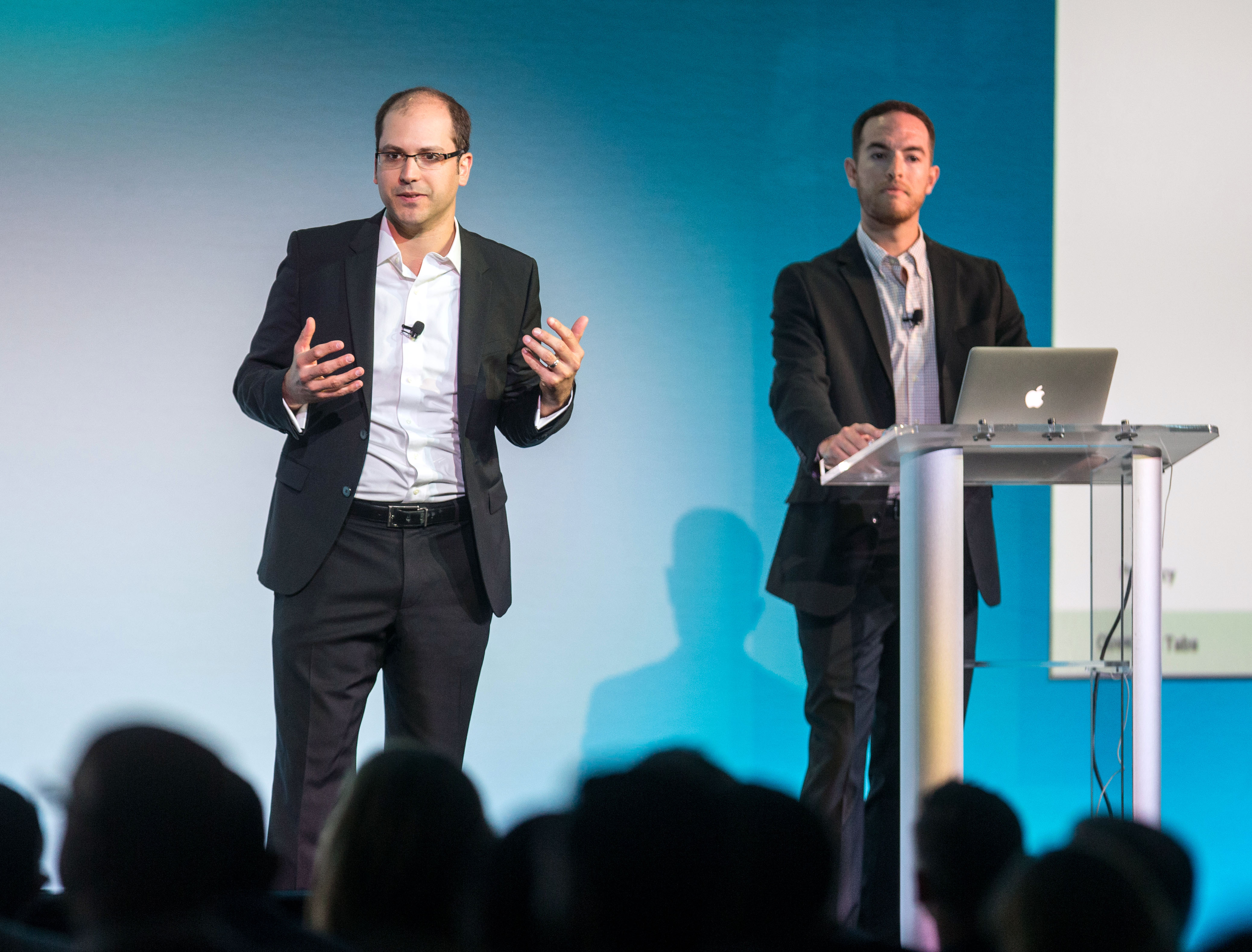
After Art outlined the vision and mission that drive Bullhorn, Matt Fisher and Bryan Roy took the stage to share how Bullhorn is translating that vision into innovative new products and features. Their key focus: using technology to create “radical transparency” and better attract talent and engage people.
They gave a sneak peek at two new Bullhorn technologies:
- Sales Duel: We’ve built the spirit of fantasy football into sales contests to truly impact behavior. Bullhorn’s first foray into gamification of sales performance is available now at salesduel.com.
- Canvas: Ad hoc reporting is here! Our new drag-and-drop report builder puts reporting directly in your hands. Build reports just the way you want them.
The goal: to make automation simpler — streamlining processes by clicks, not by code.
https://twitter.com/Bullhorn/status/740913309470359552
One of the themes of Art’s keynote was how much we’re all working. We’re always connected to work and we’re bombarded by notifications and messages. Our Thursday afternoon keynote speaker, Arianna Huffington, dug into how we can all cope and improve: Sleep!
Arianna Huffington: Leadership and the Importance of Sleep
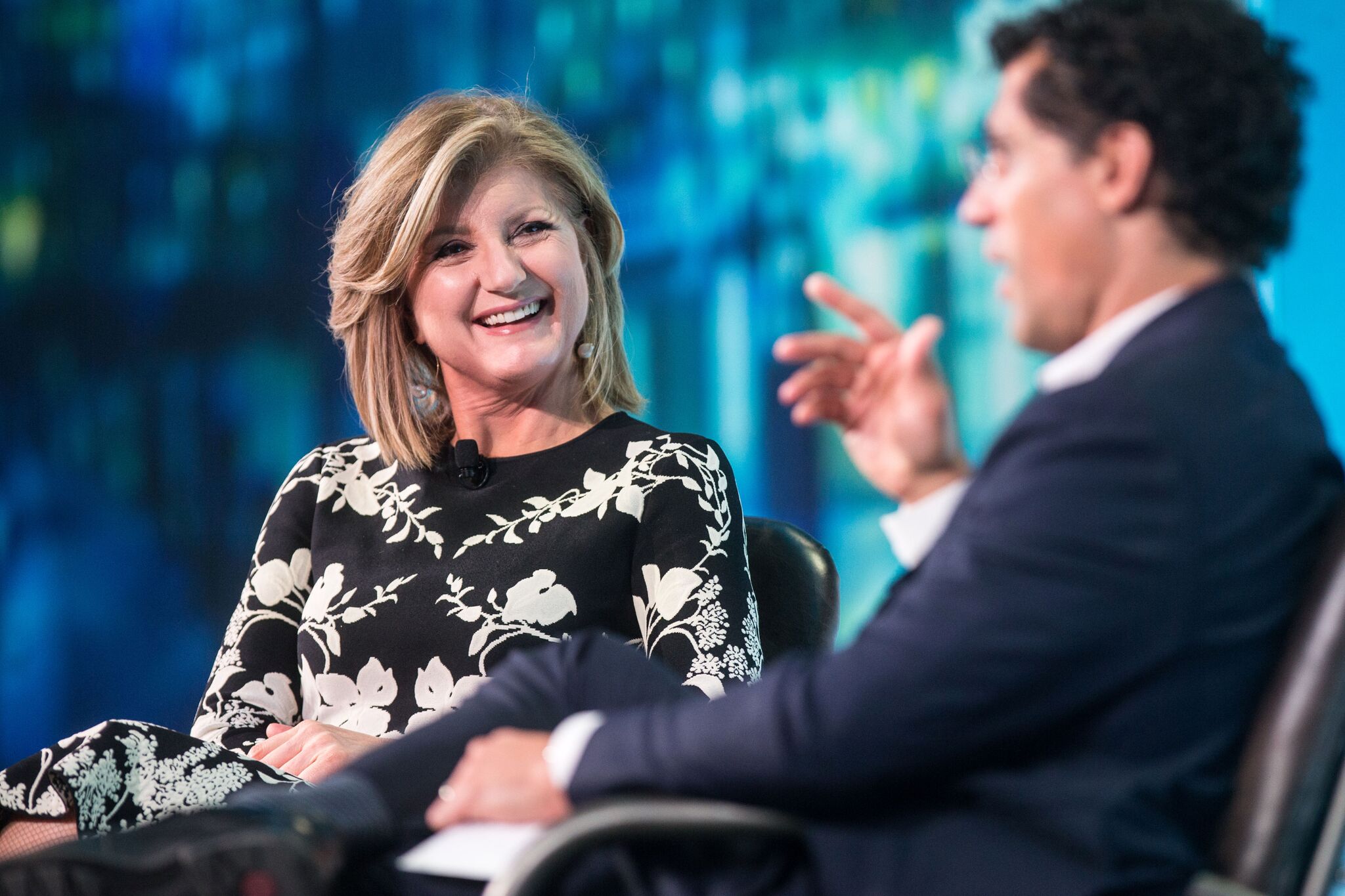
Arianna Huffington, author and founder of The Huffington Post, has a new book, “The Sleep Revolution.” She realized nine years ago that something about her hard-charging, busy career had to change. She collapsed from exhaustion and after seeing many doctors, the diagnosis was simple: She needed to sleep more.
The result of that moment nine years ago has been a deep dive into the science of sleep. “Humans aren’t machines,” she says, and in order to build productive workplaces, we need to realize that and make some changes to our always-connected work culture.
She shared a few changes her team has made at The Huffington Post to help employees rest, recharge and come to work as their best selves:
- They banned devices from meetings. “We give people beautiful leatherbound notebooks to take notes. If you have something more important to do, don’t come to the meeting. But if you come, be present.” She says her leadership meetings have gotten shorter and more productive because of the device ban.
- They give employees enough time to really rest and recharge, especially on vacation. They borrowed an idea from the German automaker Daimler. When an employee puts up an Out of Office email message, it’s some version of: “I’m on vacation, if this is urgent, please contact [another contact person], or email me again after my vacation end date. This email will be deleted.” When employees return from vacation, they do so to an empty inbox, and they’re not tempted to check and respond to email while they’re gone.
- They focus on building teams. Everyone needs someone they can pass work to. “If you’re a leader and you haven’t built a team to delegate things to, you’re failing as a leader.” After her recent vacation, she was humbled to find that everything ran just fine without her.
- They opened two nap rooms. At first, she said people were hesitant to be seen taking a 20-minute nap in the middle of the work day. But now, the rooms are always full as people take an opportunity to hit the reset button. She predicts that nap rooms will become as universal as conference rooms in offices.
“Sleep affects every aspect of our health, productivity, and happiness,” she says. She encourages leaders to read her book for sleep advice. Her number one tip? Don’t sleep with your phone. Her bedtime routine includes “gently escorting” all of her devices out of her bedroom, taking a hot bath, and letting the day end so she can recharge and prepare for the next day.
“Burnout isn’t necessary to succeed. Sleep is becoming a competitive advantage. Time we sleep is time we can connect with ourselves to allow deeper wisdom to take over.”
She looks forward to a newly developing culture of sleep, where it’s easier to recruit and retain talent, be productive and creative, and have the resilience we need to manage the change and acceleration we’re all facing.
Follow Engage coverage on Twitter #BullhornEngage. If you’re at Engage, download the mobile app iTunes or Google Play. We’ll see you at this afternoon’s sessions!




